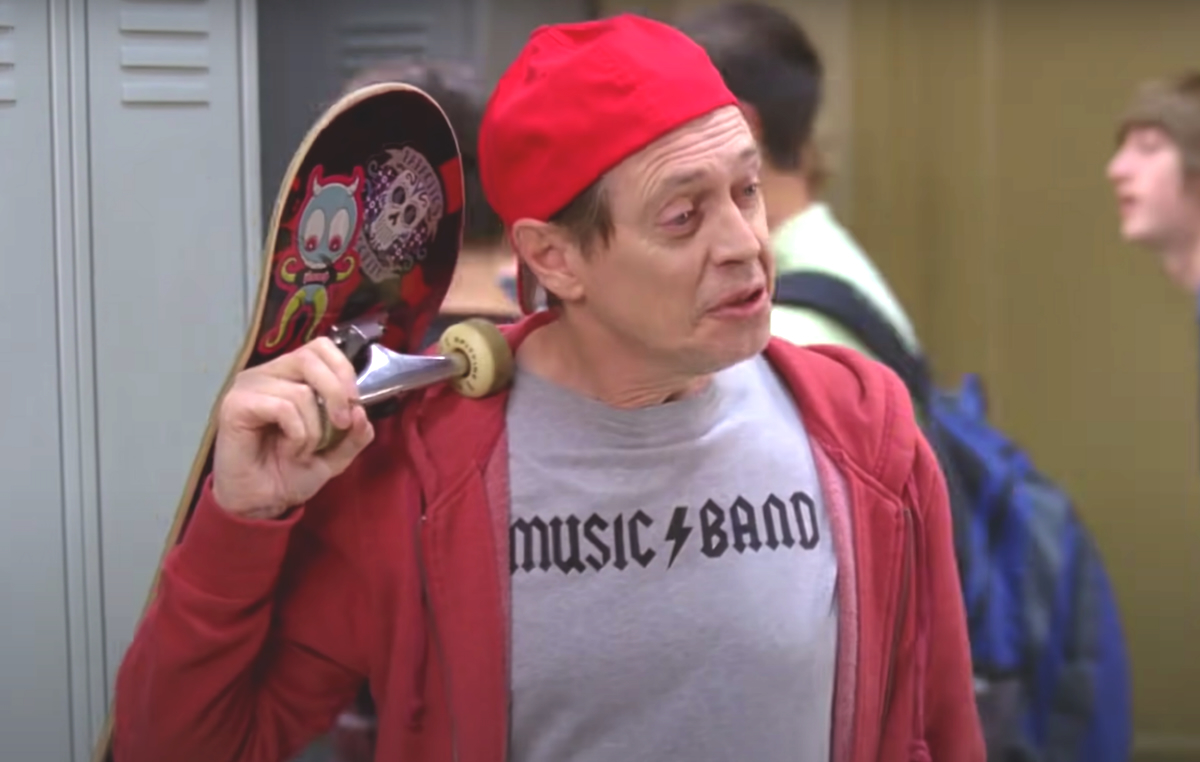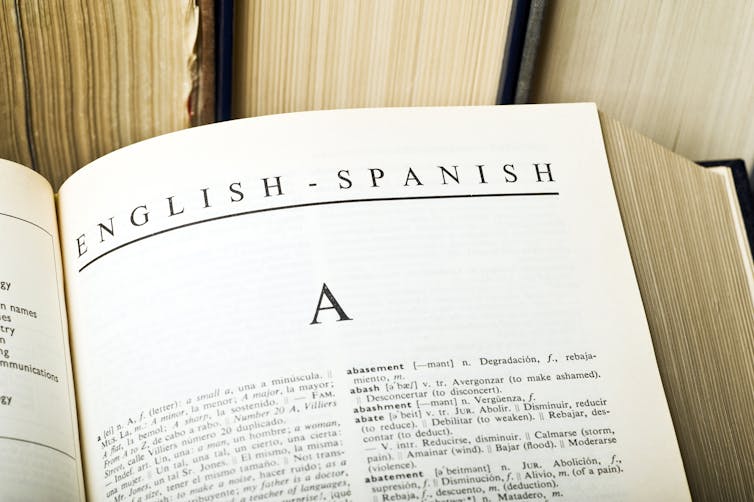For nearly six years, Mirian Librado González has been trying to reverse a decision that, at the time, she didn’t understand she was making.
After her son, Jaser, finished kindergarten in Baltimore County Public Schools, Librado González met with his teachers to talk about a plan for his education. She knew that Jaser would require accommodations. He had been diagnosed with autism and struggled to communicate verbally.
But Librado González, who is from Mexico and doesn’t speak English, had a hard time hearing the interpreter, who called into the otherwise in-person meeting. Several times, she recalled, the line went dead.
School staff members encouraged her to enroll Jaser in a special education program called Functional Academic Learning Support. She signed the documents but didn’t understand until later that Jaser would earn a certificate, not a diploma, with the program, which is designed to support students with significant learning delays from ages 3 to 21.
That’s not what she wanted for her son.
“All the papers I received were in English, and I didn’t know what it was that I was signing,” Librado González said in Spanish, translated for The Baltimore Sun by Lisa Lorraine, a program manager at the Jubilee Association of Maryland, an organization that supports adults with intellectual and developmental disabilities in Montgomery County.
Spanish speakers in Maryland, among other non-native English speakers, have long struggled to access disability services for themselves and their children, Lorraine said. A recent analysis of state data showed that while 14% of Maryland public school students who are diagnosed with autism are Hispanic, that’s only true of 4% of Marylanders participating in the state’s autism waiver program, which provides home and community-based support for kids with the disability.
The analysis was conducted by Enriqueciendo Vidas, a coalition of Maryland disability advocacy groups that are seeking equitable access to services for Hispanic and other underserved state residents. Enriqueciendo Vidas is Spanish for “enriching lives.”
The coalition’s analysis also found that while the state’s population is 12% Hispanic — up from about 8% in 2010, Hispanics make up:
- 3% of people participating in services with Maryland’s Developmental Disabilities Administration;
- 4% of those participating in the vocational rehabilitation program with the Maryland State Department of Education’s Division of Rehabilitation Services;
- 1.6% of Marylanders housed through a federally funded program that increases rental housing opportunities for people with disabilities living on low income.
In October, Enriqueciendo Vidas wrote a letter to Gov. Wes Moore and other state leaders, urging them to address the disparities. In the letter, organizations in the coalition asked leaders to require state agencies that serve people with disabilities to create language access plans — and couple that mandate with funding to ensure the plans are implemented.
In the letter, Enriqueciendo Vidas said the Maryland State Department of Education and the Maryland Department of Disabilities both report not having a language access plan — a policy that includes instructions for translating documents, providing interpretation and training staff on how to effectively use interpreters. Language access plans also inform families how to access language services, request translated documents or interpretation and make complaints when language services aren’t provided.
Under Title 6 of the Civil Rights Act, organizations that get money from the federal government are required to take reasonable steps to provide people with limited English proficiency with meaningful access to their programs and services. The federal Individual with Disabilities Education Act and the Code of Maryland Regulations additionally require that some special education documents be translated to a person’s native language.
Despite these regulations, some state agencies need to improve the way they deliver accessible services, Lorraine said. For example, when someone applies to receive services from the Developmental Disabilities Administration — which is run by the state health department — they receive a letter that explains whether they’re eligible. The letter lists a phone number people can call for assistance in their native language, but when they call the number, the message is in English, Lorraine said.
“It does not give an option for language access assistance,” said Lorraine, the manager of Jubilee’s Breaking Barriers program, which supports Hispanic and Asian people with disabilities in Montgomery County. “I have called this number — I’ve asked clients to call this number — but we don’t really get anywhere.”
Since Enriqueciendo Vidas’s Oct. 23 letter, the coalition has set up meetings with the Maryland Department of Disabilities and the Department of Health. Even though the health department has a language access plan, advocates said families still sometimes face interpretation and translation obstacles when applying for agency programs.
In an email, Kimberly McKay — assistant secretary of programs at the Department of Disabilities — confirmed that the agency does not have an official language access plan, but said creating one is a priority.
Dr. Laura Herrera Scott, the state’s health secretary, responded to the coalition’s letter within a week. Although the issues described by the coalition won’t be solved overnight, she wrote, she plans to start working toward addressing their root causes with Carol Beatty, the state secretary of disabilities. Scott said she will direct her team to review the department’s protocols and outreach programs to identify gaps in the system and understand possible disparities.
“I appreciate your offer for partnership,” her letter said, “and I am looking forward to working closely with you and the associated organizations to bring about the necessary change to provide a more equitable system of support for all individuals with disabilities in Maryland.”
As of Tuesday, the Maryland State Department of Education — which runs the Division of Rehabilitation Services — hadn’t responded to the coalition’s letter, Lorraine said, although two representatives from the department attended an event hosted by the coalition Sunday.
In a statement, Raven Hill, a spokeswoman for the state education department, said it “takes reasonable steps” to provide equal access to services for people with limited English proficiency. The rehabilitation services division, for instance, has brochures available in eight languages, and provides language interpreters for in-person and virtual meetings.
Local school systems conduct Individual Education Plan meetings — not the state education department, Hill said — so problems with language interpretation in those meetings should be addressed by local school boards.
In a statement, Baltimore County Public Schools — where Jaser is a student — said it is committed to supporting families in meaningfully participating in their children’s education. In-person interpretation services are available and can be requested by the school for pre-scheduled meetings or conferences, and the school system is working to develop a robust inventory of translated documents and forms. Schools can request the translation of documents only available in English, the statement said.
“BCPS has explored the use of interpretation and translation tools to include interpreter headsets and handheld translation devices, and we are preparing to launch a new communication app to allow for enhanced text updates and communications with parents in their preferred language,” the statement read.
The Parents’ Place of Maryland — which supports and advocates for children with disabilities and their families — recently updated its language access plan. It was a considerable undertaking for the small nonprofit, but creating the plan was an important step for the organization to assess the demographics of the families it serves and figure out how best to use its resources, said Rosa Rivera-Lily, the organization’s director of equity and engagement.
Updating the organization’s language access plan was important for financial reasons, too, said executive director Rene Averitt-Sanzone.
“At the end of the day, as a grant-funded organization, we are using taxpayer dollars,” she said. “And so we really want to be very intentional and strategic with how we are using our resources in a way to try to get us the biggest bang for our buck in supporting our most underserved and marginalized communities.”
The Parents’ Place holds workshops and training sessions in Spanish and is slowly but surely translating its educational materials into Spanish, Averitt-Sanzone said. But she and Rivera-Lily know that more is needed to achieve equity.
Families that are new to the United States are used to different educational systems, Rivera-Lily explained. Many aren’t aware their children may be eligible to receive services that would help them transition from high school to the workplace. So, she said, it isn’t enough to have an interpreter translating every word in an IEP team meeting for a parent who is an immigrant.
“They’re asking families, ‘Do you want transition help?’ They don’t know what transition is. They don’t have transition in their country,” Rivera-Lily said. “That translates to ‘moving from left to right.’ Most parents are like, ‘No, I don’t need transition help.’ And they keep moving. Nobody really stops to explain what that means. And I’ve witnessed that time and time again.”
Jimara Kocik, a board member for the Howard County Autism Society who has a 10-year-old son with autism, also has seen the consequences of information being lost in translation. As an immigrant from Central America, Kocik speaks Spanish and is learning English. She often helps parents who only speak Spanish navigate application processes to get resources for their children.
Recently, she and her husband moved their son to a private school in Baltimore that specializes in educating children with disabilities after they were dissatisfied by his progress in Howard County Public Schools. She’d bring her English-speaking husband to IEP meetings so he could translate anything she didn’t understand. She didn’t trust the school’s interpreter. In her mind, the school already had let her son down.
“I won’t accomplish anything by myself,” Kocik said. “Me, as a Latina, as a mom, with my language? No. My accent? No way.”
-
![Jimara Kocik, left, plays with her son Christopher, 10, who...]()
Jimara Kocik, left, plays with her son Christopher, 10, who is autistic, at Blandair Regional Park in Columbia. Christopher recently moved from the Howard County Public School System to a private school in Baltimore.
-
![Christopher Kocik, 10, is autistic.]()
Christopher Kocik, 10, is autistic.
-
![Jimara Kocik, right, plays with her 10-year-old son Christopher, who...]()
Jimara Kocik, right, plays with her 10-year-old son Christopher, who is autistic. Jimara, an immigrant from Central America, said language barriers often make it harder for immigrants to get the services they need.
-
![Christopher Kocik, 10, who is autistic, plays at Blandair Regional...]()
Christopher Kocik, 10, who is autistic, plays at Blandair Regional Park in Columbia under the watch of his father Richard.
A spokesperson for Howard County Public Schools directed a reporter to a webpage about multilingual family services on the school system’s website when asked about Kocik’s experience. According to the webpage, Howard County Public Schools provides phone referral services in Spanish and Korean for families with questions and concerns related to school matters. The school system, it says, also has a “cadre” of certified interpreters who assist with communication at school meetings, parent-teacher conferences and at other school functions.
There is a real lack of trust between families and state agencies that serve people with disabilities, Averitt-Sanzone said. Often, it’s up to nonprofits like the Parents’ Place to dispel misinformation and help guide families through complicated application processes. But many organizations don’t have consistent funding sources.
The Parents’ Place, for instance, relies mostly on state and federal grants to keep the lights on. While some grants last for multiple years, others must be renewed annually. It’s a rare moment when Averitt-Sanzone isn’t midway through a grant application or preparing to start another one. She’s currently figuring out how to keep the bilingual staff members she hired during the pandemic with coronavirus-specific federal grant dollars.
Enriqueciendo Vidas’s letter also asks state leaders to provide multi-year, consistent funding to nonprofits that provide education, training and guidance to underserved families that care for people with disabilities.
“What we’re asking for is the systemic solution,” Lorraine said. “That the state put in the investment, continuous investment, to be able to support this type of work at organizations that have a proven track record of doing it.”
Workshops led in Spanish by the Parents’ Place and other nonprofits have helped Librado González become more informed about her rights as a parent and her son’s rights as a student.
She still wants Jaser, who is now in 6th grade, to be able to graduate with a diploma, but she isn’t optimistic. It’s been so many years since he was enrolled in the certificate program.
“They trick you, saying ‘Jaser is doing well,’” Librado González said. “‘He’s happy, he’s smiling.’ The teachers are laughing when they are talking about it. But they’re not explaining that he’s not progressing.”
Adblock test (Why?)









:max_bytes(150000):strip_icc():focal(790x205:792x207)/Love-and-Translation-Tout-120423-cdc1cc8c80284a8fb3f6dcb645923f3a.jpg)